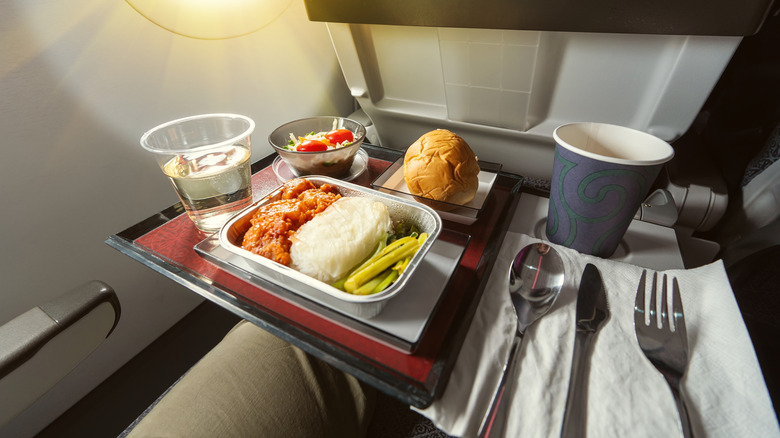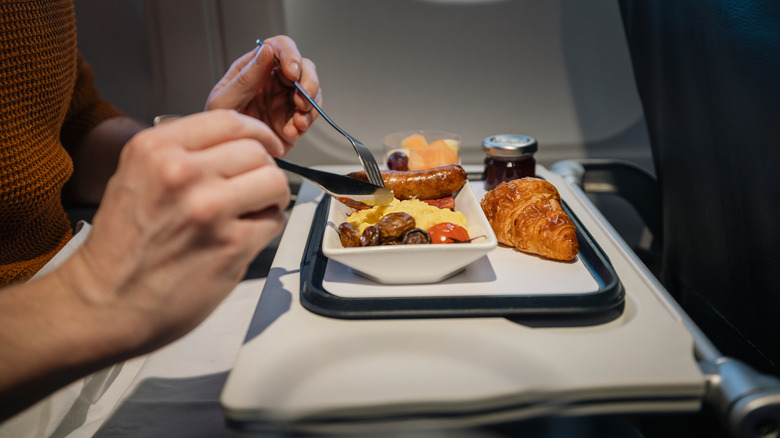Ever Wonder Where Your Airplane Food Comes From?
Gone are the days of an in-flight meal on most domestic flights if you're sitting in economy. Instead, we're often purchasing pricey snack boxes or sandwiches, eating tiny bags of chips, or noshing on food we brought in ourselves. Still, if you're lucky enough to be sitting in first or business class, or if you're taking an international flight, you may have wondered where the airplane food you're about to eat comes from. Whether you're choosing between chicken or pasta, or dining on a requested specialty meal, you're rarely going to have a working chef with you at 30,000 feet. There are exceptions to this, of course, but most airplane meals are created by specialty catering companies.
In 2025, the airline food industry was worth around $21 billion (per Precedence Research), and despite the jokes about bland airplane food, it's still fascinating to consider that you're eating a meal in a small metal tube that is soaring through the clouds. A large portion of in-flight meals are made by three catering companies: GateGroup, Flying Food Group, and LSG Sky Chefs. GateGroup, which started as in-house catering for Swissair in 1931, operates in over 200 locations in around 60 countries. Flying Food Group was founded in 1983 and works in nearly 40 countries. Sky Chefs was started by American Airlines in 1942 and is the oldest independent caterer in the world, while LSG was started by Lufthansa in 1966. LSG acquired Sky Chefs in 2001, and now it makes around 308 million in-flight meals a year.
How in-flight meals are chosen and prepared
While the food is rarely made from scratch on a plane, it's usually cooked before your flight near the airport in specific catering areas. Then the food is taken to the plane and heated with in-flight ovens that are designed to be used in the air. Food often tastes different on a plane because the dry air can affect our ability to smell, which can, in turn, make food taste more bland. One way to counteract that is salt, which can inadvertently make you retain water and feel puffy after a flight. You may also notice that you don't perceive sweetness the same way during a flight, which is why your fizzy ginger ale tastes crisper and fresher on a plane. Of course, that means sugar may be added to meals as well. The types of foods you're served may also depend on where you're flying from or going to in the world, and the time of day and year. Customer comments can change what is served, too.
In addition, you can often order specialty meals to fit your food and allergy requirements, although these usually have to be reserved at least 48 hours beforehand. It's also a good idea to take a look at what your airline offers. You may see codes like "AVML" for Asian vegetarian meals, "GFML" for gluten-free meals, "KSML" for kosher meals, and "VGML" or "VVML" for vegetarian or vegan meals. Finally, if all this talk about airplane food has got you thinking about an upcoming trip, here are the five airlines with the best in-flight dining experiences.

